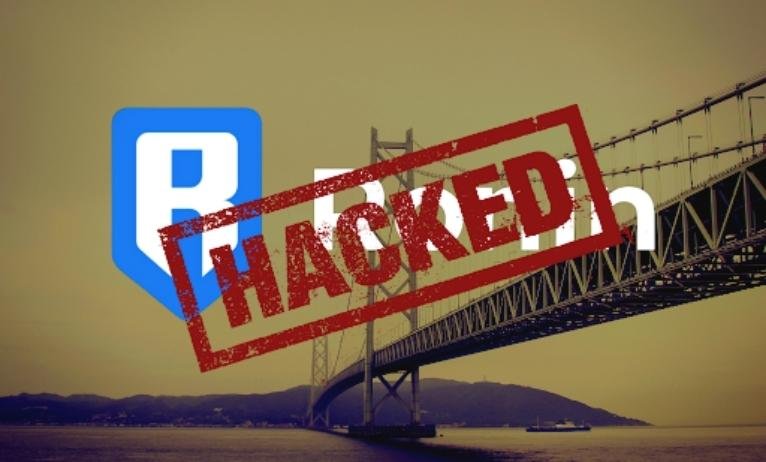
[ad_1]
In case you have adopted the happenings in crypto for the previous fortnight, you could be accustomed to the Ronin community exploit that threatened a $620 million loss in cryptocurrencies. The unofficial submit mortem exhibits the hackers used compromised personal keys to forge withdrawal signatures, a difficulty that has raised eyebrows throughout the crypto discipline.
This piece focuses on what transpired within the Ronin community assault, how the hackers transferred the funds, and the options out there to stop such a multisig hack sooner or later.
Understanding the Ronin Community Hack
On March 29, Axie Infinity sidechain, Ronin community issued a community warning that the community was beneath assault, with 173,600 ETH and 25.5 million USDC being transferred to a hacker’s pockets, leading to a lack of near $620 million. In accordance with unofficial submit mortem outcomes from the SlowMist blockchain safety staff, the hack was carried out by way of a compromise of the Ronin community validator nodes.
Locally warning despatched by Sky Mavis, the guardian firm of the Ronin community, the hack was accomplished on March 23 however went unnoticed till among the customers reported that they have been unable to withdraw a few of their funds from the bridge. In accordance with the discharge, the hacker used compromised personal keys to entry and withdraw funds from the bridge in solely two transactions.
To know higher, the Ronin community consists of 9 validator nodes. These validator nodes confirm the deposits and withdrawals from the Ronin chain, with 5 of the 9 validator nodes required to signal the transactions. The attacker managed to get management over Sky Mavis’s 4 Ronin Validators and a third-party validator run by Axie DAO.
The entire debacle may be traced again to November 2021, when Sky Mavis delegated the Axie Infinity DAO to assist distribute free transactions. Nonetheless, the massive variety of transactions compelled Axie DAO to whitelist Sky Mavis, permitting the corporate to signal varied transactions to reduce the burden.
Whereas the transactions have been decreased, the whitelist entry was by no means revoked, which allowed the attacker to achieve entry to the Sky Mavis system and signal the transactions as a validator.
In accordance with Sky Mavis, the hacker discovered a backdoor by way of the gas-free RPC node and received the signature for the Axie DAO validator, which allowed him to withdraw over $620 million in cryptocurrencies.
Multisig platforms being hacked appears to be rising, with the Wormhole bridge additionally struggling a hack just lately. In contrast to the Ronin community, Wormhole bridge customers weren’t so fortunate as hackers have been in a position to steal lots of of thousands and thousands. The Wormhole hack concerned a wise contract exploit that tricked the multisig-based bridge into displaying that wrapped Ethereum (wETH) had been deposited into the Solana bridging contract and redeemed on Ethereum.
Regardless of the latest hacks, multisig platforms present an added layer of decentralization to stop such hacks and supply higher safety. Whereas this isn’t the case presently, the concept behind multisig wallets continues to be useful. Fortunately, the crypto world is regularly constructing options to stop these latest multisig-based hacks, Flare’s LayerCake bridge turning into the most recent to supply options to this downside.
Fixing the Multisig Hack Downside
Flare community, a blockchain platform that permits safe interoperability between chains, goals to present options to the multisig downside by way of its LayerCake model. This mannequin proposes a financial “Bandwidth Suppliers (BPs)” system that owns the signing rights to maneuver a certain amount of worth throughout the bridge per unit of time.
In the mean time, it’s proposed to be each one hour. The “Bandwidth” is the quantity of worth they might transfer throughout the bridge in any unit of time, enforced by the good contracts, is the “Bandwidth”.
To forestall the signatories or somebody with entry to the signatories from stealing or compromising the system, BPs should deposit the identical quantity of worth of funds being bridged to the LayerCake good contract. This ensures that if all of the BPs or signatories conspire to trick the system (Bandwidth), there’s the identical quantity of worth saved within the good contract to cowl the loss.
The LayerCake mannequin additionally introduces an open secondary system of incentivized observers that discover and take away any malicious BPs from signing the bridge transactions. Therefore any malicious bandwidth supplier may be eliminated inside a single unit of time, and the collateral offered by the BPs all the time covers bridge person funds. If the entire BP’s are malicious, the system can nonetheless function by way of a relay between the chains, albeit extra slowly.
Lastly, the system additionally protects customers from reorganization assaults by collateralizing the BPs immediately on Flare for a time frame such that reorganization assaults have a negligible likelihood. In a reorganization assault, the collateral staked by the BPs is used to reimburse the customers’ funds on the bridge.